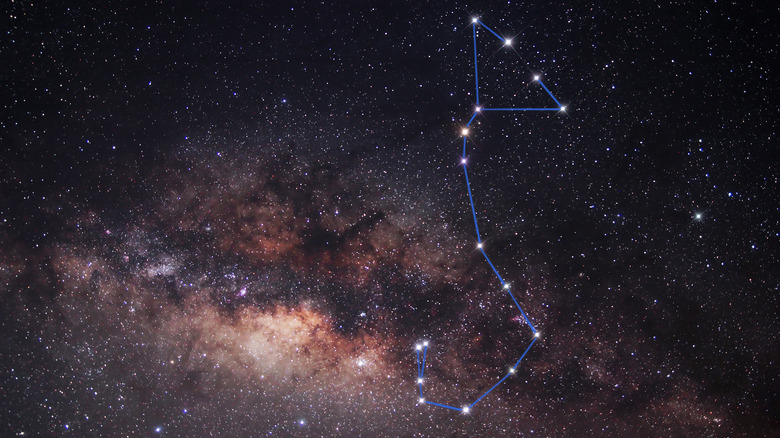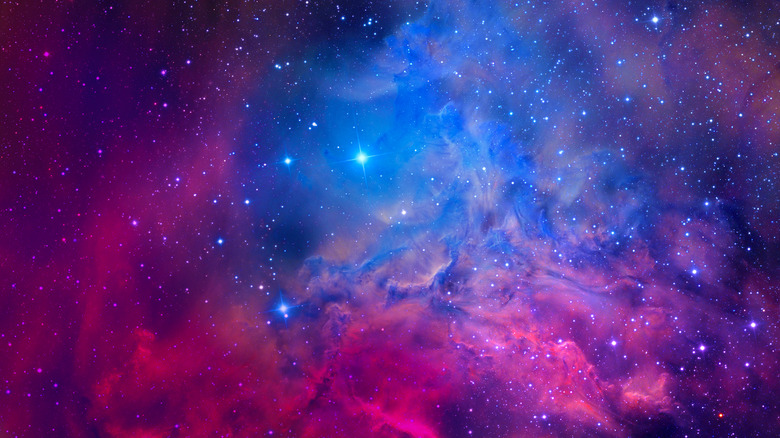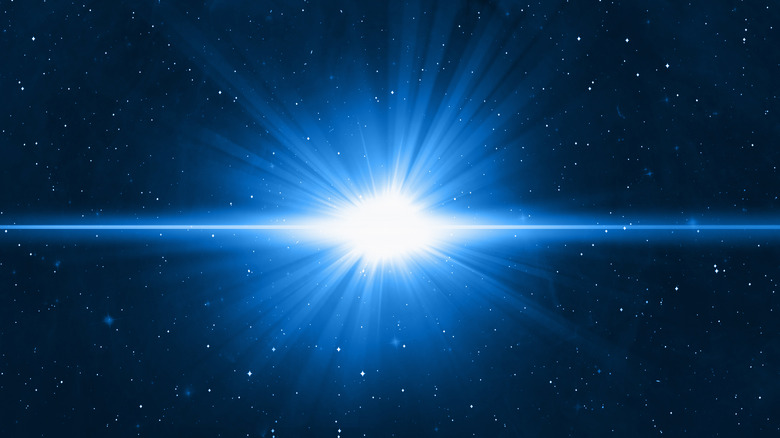Why The Scorpius Constellation Will Look A Lot Different In The Next 10,000 Years
If you live in the Northern Hemisphere during the months of July and August, take a look at the stars on a clear night, and you might be able to find one of the better well-known constellations: Scorpius the Scorpion. In ancient Greek mythology, it was believed that Scorpius was created by Gaia, the goddess of the Earth, to poison Orion the Hunter, who was becoming arrogant of his hunting abilities, according to EarthSky. Per the cosmos outlet, this act made Orion hate Scorpius, and that was the ancient reasoning for why Orion and Scorpius can never be seen in the sky at the same time.
In Hawaiian mythology, it's believed that the Scorpius constellation is actually Maui's fishhook. As told by the Hawaiian Astronomical Society, Maui, a Hawaiian demigod, supposedly had a fishhook that he threw behind him while his brothers were paddling, and told them to never look back. Eventually, the brothers grew tired and finally looked back to see what Maui was catching, only to discover that the fishhook was catching land. Since the brothers looked back, the fishhook didn't pull up any more land, and the land that was pulled up became the Hawaiian islands.
This notable constellation may drastically change within the next couple thousand years and thus, also transforming the stories told about it as well.
The birth of a star
When looking at the Scorpius constellation, one of the easiest stars to spot is Antares. Antares is seen as the heart of the Scorpion, given its bright glow due to it being a supergiant. However, as reported by the Austin-American Statesman, scientists speculate that this notable star may vanish from the sky as it reaches its death within the next 10,000 years or so.
Like all stars, Antares started out as a stellar nebula, also known as a stellar nursery, which is a collection of gases that gravitate toward each other. Eventually, the gases get so dense that they collapse on their cores, which causes the materials in these gas clouds to get so hot that they can begin nuclear fusion, according to the National Schools' Observatory.
After a star has the capability for nuclear fusion, it starts to shine, but is considered a proto-star until it can turn hydrogen into helium (via NSO). However, the burst of light created by the newly formed star causes materials in the stellar nebula to be pushed away, and possibly form into planets or other celestial objects that form a solar system.
Antares' inevitable death
Eventually, the hydrogen inside of a star, which helps power nuclear fusion, begins to run out and cause the star to cool down. During this phase, a normal star becomes a red dwarf, but a star like Antares in the Scorpius constellation develops into a red supergiant. Once a star is a red supergiant, it's only a matter of time before it experiences a supernova. A supernova is an event where a star collapses on itself and causes an explosion, which can turn the star into a black hole or a neutron star, according to the National Schools' Observatory.
Given that Antares is already a red supergiant, it's already nearing the end of its lifespan. Antares will face the same fate as all other stars and experience its own supernova, where it might transform into either a black hole or neutron star, and disappear from the eyes of people here on Earth, which will radically change the way the Scorpius constellation is looked at today. Perhaps people thousands of years from now will look at the constellation in a new way, and create entirely new stories out of the transformed group of stars.


